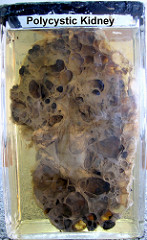Your kidneys are important due to the many functions they serve, such as producing hormones and filtering blood. As a result, kidney diseases can cause serious problems if neglected. There are many types of kidney diseases, but a fairly common one that affects around half a million people in the United States is polycystic kidney disease. Polycystic kidney disease is a genetic disorder that is defined by the formation of fluid-filled sacs, or cysts, in the kidneys. The presence of these cysts is problematic as they interfere with the kidneys’ role in filtering blood. Symptoms of the disease include kidney stones, side pains, and blood in urine. Current treatment options largely focus on minimizing and managing symptoms, but can affected individuals be cured of the disease? Fortunately, a recent finding has made new progress towards that goal.
Image Source: Medical Art Inc
Researchers have discovered that targeting the blood and lymphatic vessels around the cysts may be vital to finding a cure for polycystic kidney disease. The discovery resulted from an observation made while examining mice that suffered from the disease; the researchers found that the formation of cysts was connected to the disorganization of vessels surrounding those cysts. This observation suggests that correcting the complications associated with the vessels may lead to an alleviation of polycystic kidney disease symptoms. To test this theory, the researchers treated the mice with a growth factor protein called VEGF-C. Due to its role in assisting in the formation of new blood vessels, VEGF-C should be able to fix the issues with the vessels around the cysts. Surely enough, the researchers found that the vessels of the mice that were treated with the protein were normalized and the overall functioning of their kidneys improved as well.
The results of this study suggest that targeting the vessels surrounding the cysts that form may potentially serve as an alternative treatment for polycystic kidney disease. This new approach to the disease may also work alongside current treatment options which target the epithelium of the cysts.
Feature Image Source: Polycystic Kidney u6 by Albaraa Mehdar










